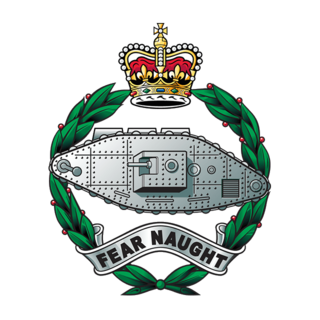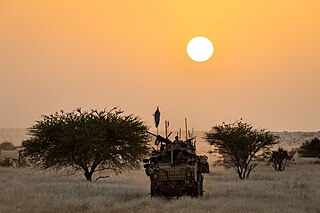History
The Heavy Cavalry and Cambrai Band was formed on 1 June 2006. As a consequence of Future Army Structures (a government review of the Armed Forces), the four bands of The Royal Armoured Corps were reduced to two. The Band of the Dragoon Guards was formed in 1994 when, as a result of the Options for Change (of 1991), the respective bands of the Queen’s Dragoon Guards, The Royal Scots Dragoon Guards and The Royal Dragoon Guards (itself formed in 1992 by amalgamation of the 4th/7th Royal Dragoon Guards and 5th Royal Inniskilling Dragoon Guards) were all amalgamated. The title ‘Heavy Cavalry’ has been with Dragoon Regiments for hundreds of years as a result of the heavy body armour that was worn in battle. [1]
The first official Band of the Royal Tank Regiment was formed in 1922. In 1947 it was expanded to become three separate bands, firstly named A, B and C Bands then later Cambrai, Alamein and Rhine. In August 1994 these bands joined forces to form Cambrai Band of the Royal Tank Regiment and were based in Fallingbostel, Northern Germany. [1]
The Heavy Cavalry and Cambrai Band was one of the two new bands formed in 2006, essentially an amalgamation of The Band of the Dragoon Guards and Cambrai Band of the Royal Tank Regiment. Many of the band members were already serving at Catterick Garrison with either the Normandy Band of the Queen's Division or the Waterloo Band of the King's Division. The remaining musicians arrived from other prestigious bands from within the Corps of Army Music. [1]
On 1 June 2006, the band formed up at Piave Lines, Catterick Garrison, now under control of the Corps of Army Music. For local administration, the 15th (North East) Brigade oversaw the band. [1]
On Tuesday, 27 June 2007, the band left its base at Catterick Garrison for Wales to deploy on 'Exercise Welsh Eagle'. The first half of the tour saw the band providing musical support for the Queen's Dragoon Guards as they celebrated their Freedom of the City parade in Cardiff, Principality of Wales. The second part of the tour saw the band perform in North Wales at Bon-y-maen during a rugby match between the Queen's Dragoon Guards and a local team. [2]
As a result of the Army 2020 programme, the band was amalgamated with the Light Cavalry Band to form the new Band of the Royal Armoured Corps. [3]

Dragoons were originally a class of mounted infantry, who used horses for mobility, but dismounted to fight on foot. From the early 17th century onward, dragoons were increasingly also employed as conventional cavalry and trained for combat with swords and firearms from horseback. While their use goes back to the late 16th century, dragoon regiments were established in most European armies during the 17th and early 18th centuries; they provided greater mobility than regular infantry but were far less expensive than cavalry.

The Royal Armoured Corps is the armoured arm of the British Army, that together with the Household Cavalry provides its armour capability, with vehicles such as the Challenger 2 and the Warrior tracked armoured vehicle. It includes most of the Army's armoured regiments, both the Royal Tank Regiment and those converted from old horse cavalry regiments. Today it comprises twelve regiments, eight regular and four Army Reserve. Although the Household Cavalry Regiment provide an armoured regiment, they are not part of the RAC.

The Royal Scots Greys was a cavalry regiment of the British Army from 1707 until 1971, when they amalgamated with the 3rd Carabiniers to form the Royal Scots Dragoon Guards.

The Royal Scots Dragoon Guards (Carabiniers and Greys) is a cavalry regiment of the British Army, and the senior Scottish regiment. The regiment, through the Royal Scots Greys, is the oldest surviving Cavalry Regiment of the Line in the British Army. The regiment is based at Waterloo Lines, Leuchars Station, as part of 51st Infantry Brigade and Headquarters Scotland, a light adaptable force brigade.
Options for Change was a restructuring of the British Armed Forces in summer 1990 after the end of the Cold War.

The Royal Tank Regiment (RTR) is the oldest tank unit in the world, being formed by the British Army in 1916 during the First World War. Today, it is the armoured regiment of the British Army's 12th Armoured Infantry Brigade. Formerly known as the Tank Corps and the Royal Tank Corps, it is part of the Royal Armoured Corps.

The Royal Dragoon Guards (RDG) is a cavalry regiment of the British Army. It was formed in 1992 by the amalgamation of two other regiments: The 4th/7th Royal Dragoon Guards and the 5th Royal Inniskilling Dragoon Guards. Based in Battlesbury Barracks, Wiltshire, the regiment currently serves as the armoured cavalry reconnaissance unit of 20th Armoured Brigade Combat Team. Previously equipped with the Scimitar armoured reconnaissance vehicle, it started converting to the Warrior tracked armoured vehicle in 2022.

The 4th Princess Louise Dragoon Guards is an inactive armoured regiment of the Canadian Militia / Canadian Army. It is currently on the Supplementary Order of Battle.

The 3rd Carabiniers (Prince of Wales's Dragoon Guards) was a cavalry regiment of the British Army. It was formed in 1922 as part of a reduction in the army's cavalry by the amalgamation of the 3rd Dragoon Guards (Prince of Wales's) and the Carabiniers (6th Dragoon Guards), to form the 3rd/6th Dragoon Guards. It was renamed the 3rd Carabiniers (Prince of Wales's Dragoon Guards) in 1928 and amalgamated with the Royal Scots Greys (2nd Dragoons), forming the Royal Scots Dragoon Guards (Carabiniers and Greys) in 1971.

Dragoon Guards is a designation that has been used to refer to certain heavy cavalry regiments in the British Army since the 18th century. While the Prussian and Russian armies of the same period included dragoon regiments among their respective Imperial Guards, different titles were applied to these units.

The 13th/18th Royal Hussars was a cavalry regiment of the British Army. It was formed by the amalgamation of the 13th Hussars and the 18th Royal Hussars in 1922 and, after service in the Second World War, it amalgamated with the 15th/19th The King's Royal Hussars to form the Light Dragoons in 1992.

The uniforms of the British Army currently exist in twelve categories ranging from ceremonial uniforms to combat dress. Uniforms in the British Army are specific to the regiment to which a soldier belongs. Full dress presents the most differentiation between units, and there are fewer regimental distinctions between ceremonial dress, service dress, barrack dress and combat dress, though a level of regimental distinction runs throughout.

The 1st Armoured Infantry Brigade was an infantry brigade of the British Army with a long history including service during both the First and the Second World Wars. It was based at Tidworth Camp. Previously, it has been designated 1st (Guards) Brigade, 1st Infantry Brigade, 1st Mechanised Brigade, and under the initial Army 2020 reforms assumed the title of 1st Armoured Infantry Brigade. Under the Future Soldier programme, the brigade merged with the 1st Artillery Brigade to form the 1st Deep Recce Strike Brigade Combat Team.

There are 13 cavalry Regiments of the British Army each with its own unique cap badge, regimental traditions, and history. Of the currently nine regular cavalry regiments, two serve as armoured regiments, three as armoured cavalry regiments, three as light cavalry, and one as a mounted ceremonial regiment. There are also four yeomanry regiments of the Army Reserve, of these, three serve as light cavalry and one as an armoured regiment. Each yeomanry light cavalry unit has been paired with a regular unit of the same role, the armoured yeomanry unit is paired with the two regular armoured units. All except the Household Cavalry are part of the British Army's Royal Armoured Corps.

The 2nd Dragoon Guards (Queen's Bays) was a cavalry regiment of the British Army. It was first raised in 1685 by the Earl of Peterborough as the Earl of Peterborough's Regiment of Horse by merging four existing troops of horse.

The Queen's Own Yorkshire Dragoons was a yeomanry regiment of the British Army in existence from 1794 to 1956. It was formed as a volunteer cavalry force in 1794 during the French Revolutionary Wars. Its volunteer companies played an active role with the Imperial Yeomanry in the Second Boer War, but opportunities for mounted action were much more restricted during the First World War and it was temporarily converted into a cycle unit. It remained a cavalry regiment throughout the interwar years, and was the last horsed unit of the British Army to see action, in the Syria–Lebanon Campaign of 1941, finally mechanising the following year. It served as motorised infantry in the North African and Italian campaigns of the Second World War. In 1956, it merged with the Yorkshire Hussars and the East Riding of Yorkshire Yeomanry to form the Queen's Own Yorkshire Yeomanry. Its lineage is continued today by A Squadron, the Queen's Own Yeomanry.

The page contains the current structure of the British Army. The British Army is currently being reorganised to the Future Soldier structure.
The Band of the Royal Armoured Corps was a mounted band of the Royal Corps of Army Music within the British Army. Although one of the newest bands their traditions go back can be traced to before 1939. Following the 2020 reorganisation of the RCAMUS, the band was disbanded, forming an element of the new British Army Band Catterick.

The Albert helmet is a type of dragoon helmet introduced by the British military in the 19th century. The helmet was developed by Prince Albert of Saxe-Coburg and Gotha in 1842, and was first introduced for service with the Household Cavalry in 1843. The helmet was introduced to other heavy cavalry units in the British Empire in 1847.
The 1st Deep Reconnaissance Strike Brigade Combat Team is a formation of the British Army, currently headquartered in Delhi Barracks, Tidworth Camp, Wiltshire, as part of the 3rd Division.

















